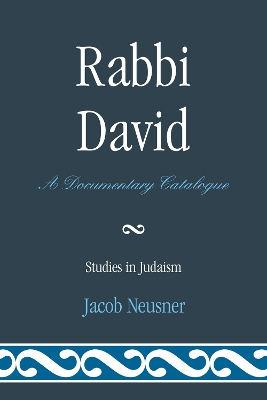Rabbinic documents of David, progenitor of the Messiah, carry forward the scriptural narrative of David the king. But he also is turned by Rabbinic writings of late antiquity-from the Mishnah through the Yerushalmi and the Bavli-into a sage. Consequently, the Rabbis' Messiah is a rabbi. How did this transformation come about? Of what kinds of writings does it consist? What sequence of writings conveyed the transformation? And most important: what do we learn about the movement from one set of Israelite writings to take over, or submit to the values of, another set of writings? These are the questions answered here for David, king of Israel.
Rabbi David proves that the first exposition of the figure of Rabbi David in a program of elaboration and of protracted exposition of law and Scripture is found in the Bavli. Prior to the closure of that document, that is, in the Rabbinic documents that came to closure before the Bavli, we do not find an elaborate exposition of the figure of David as a rabbi. By contrast, in the Bavli, ample canonical evidence attests to the sages' transformation of David, king of Israel, into a rabbi. So while bits and pieces of Rabbi David find their way into most of the canonical documents, we find the elaborately spelled out Rabbi David to begin with in the Bavli, now represented as a disciple of sages and a devotee of study of the Torah. That usage attracts attention because when we encounter David in Rabbinic literature-as in all other Judaic canons, not only Rabbinic-this signals we are meeting the embodiment of the Messiah. The representation of the kings of Israel in the Davidic line as heirs of David forms a chapter in exposing the Messianic message of Rabbinic Judaism.
- ISBN10 0761858474
- ISBN13 9780761858478
- Publish Date 5 April 2012 (first published 1 January 2012)
- Publish Status Active
- Publish Country US
- Imprint University Press of America
- Format Paperback
- Pages 218
- Language English
